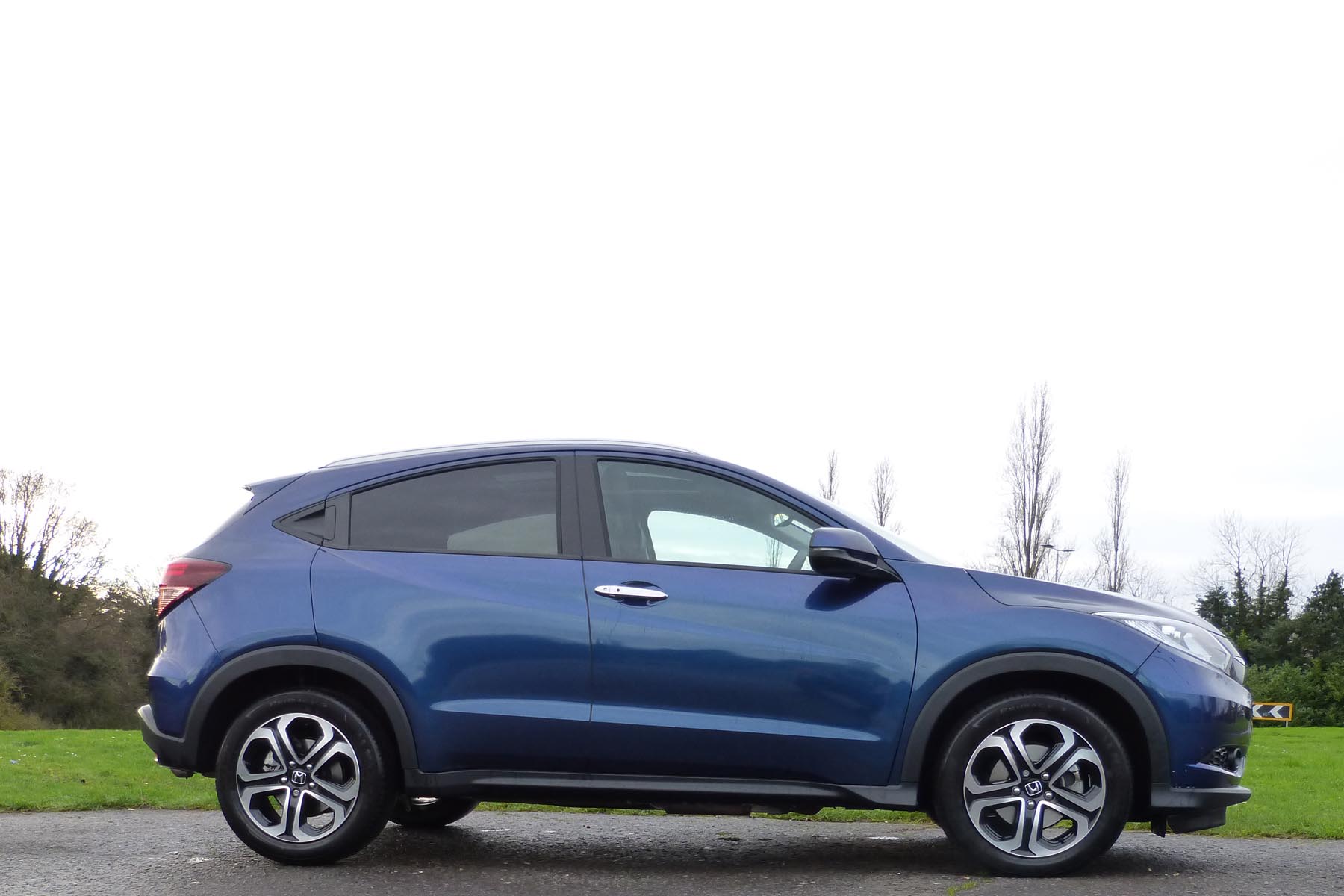
The six months I have spent with the HR-V has quickly slipped by. My example was one of the first to hit UK roads and I was deeply interested in whether Honda could pull off this new model in its range.
There’s a definitely place on our roads for crossovers smaller than Honda’s own very successful CR-V. As such cars pump up in size with each successive generation, the current HR-V promises to be at least as effective as the original CR-V from 20 years back.
It now sensibly fills the gap between the ever-popular Honda Jazz and the CR-V, while sitting alongside the similarly-priced Civic. The HR-V makes massive sense on paper, too. It comes with all of the Jazz’s renowned versatility coupled to a high driving position and more space.
That means rear seats that fold like an origami toy, and deeply impressive packaging. To my mind I can’t think of any other manufacturer that manages to sweat so much volume for passengers and luggage from a car of this size.
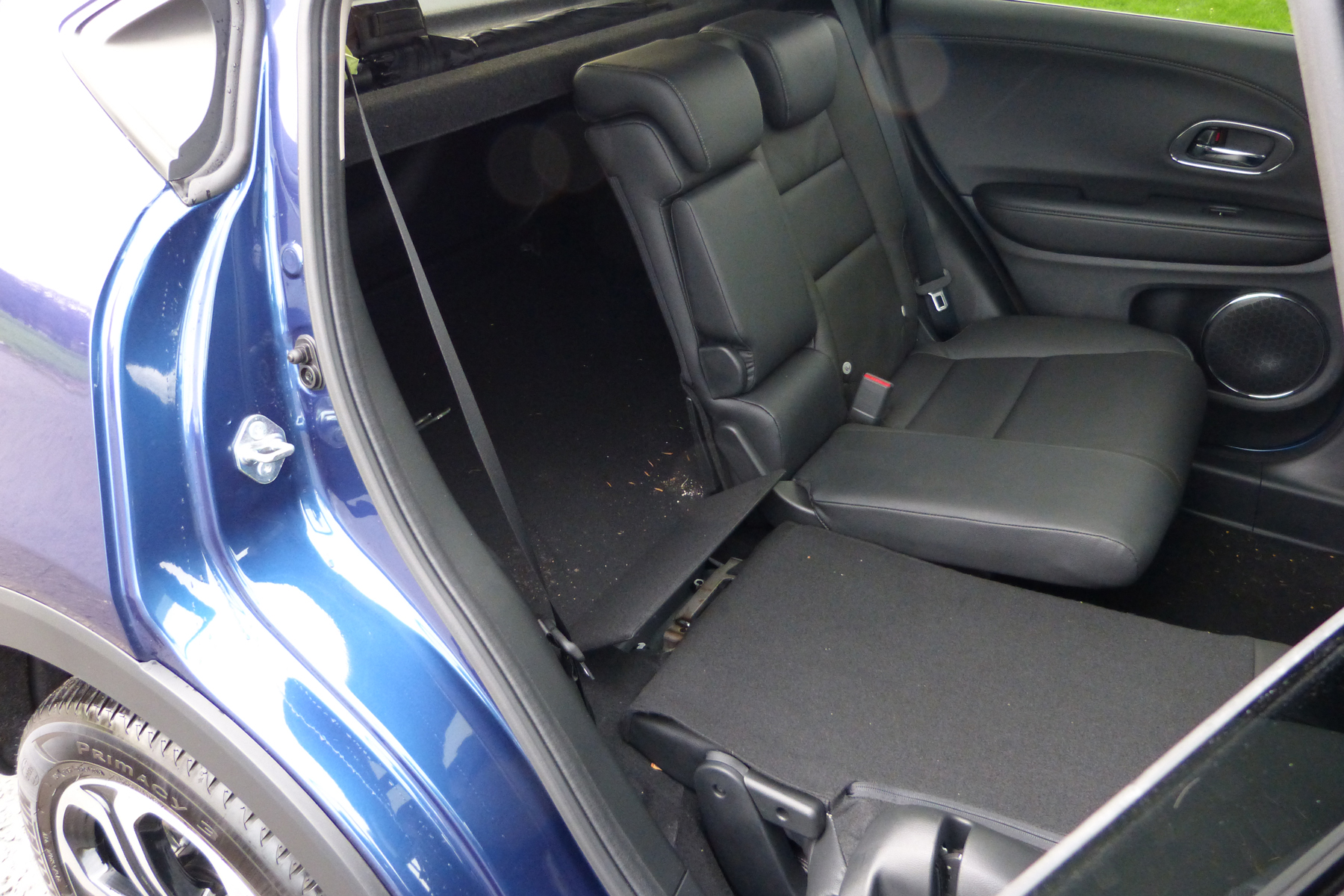
The HR-V might look like compact off-roader, but the UK car market says that few buyers are interested in the additional costs of four-wheel drive. Thus, you get just the front-wheel-drive HR-V in the UK, and if you want automatic transmission, it has to be with the 1.5-litre petrol engine.
Our HR-V came with the 1.6-diesel coupled to a six speed manual transmission. Some years ago, I owned an Accord 2.4S with the sweetest gearchange you could imagine, and this HR-V comes close. The lever snicks satisfyingly through the gate, always easy and precise.
The engine has 120hp, which may not sound like a great deal, but diesel pulling power results in performance that is always in keeping with the whole ethos of the HR-V. Which means just fine, although not much fun.
The HR-V, for all its stylish looks, is actually a bit dull to drive. Everything works as it should, no complaints there, but this is the motor car as a dependable means of getting around, not one that you are ever likely to think “oh good, time for another drive in the Honda”.
This top-level HR-V EX comes in at £26,055 (a rise of £1,110 over the September 2015 launch price), plus £525 for metallic paint. It’s a fully-specced car, with Garmin navigation, smart entry and engine start, a full length panoramic opening glass roof, heated leather seats and LED headlights.
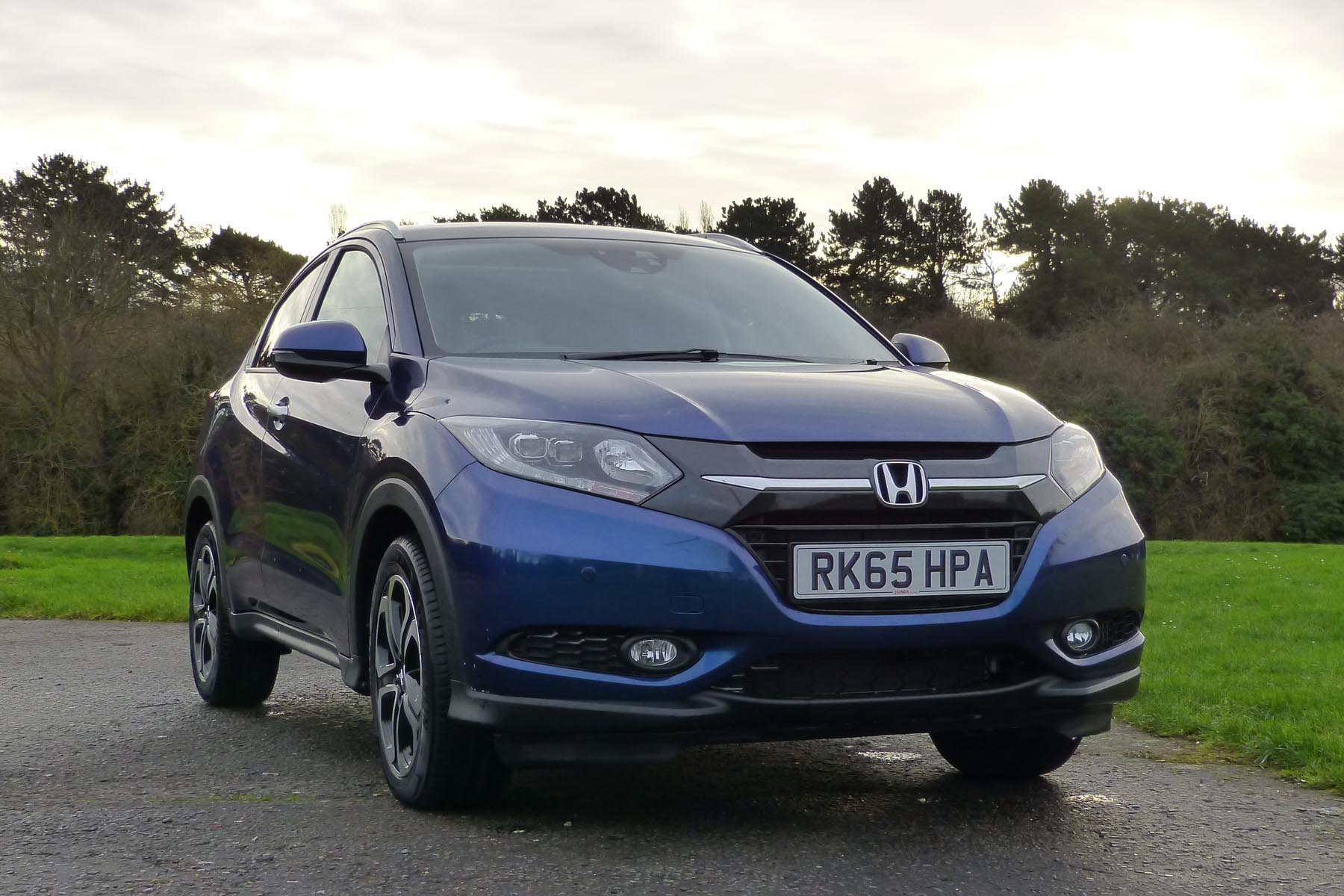
Arguably this is over-egging what is basically a straightforward crossover, one that makes more sense lower down the scale with the S and SE models that loiter around the £20k mark. The S gets Honda’s City Brake safety system that I didn’t need to utilise, thank goodness, but the Forward Collision Warning on the SE model and above is a really useful light/sound combination that strikes up when you get too close to the car in front.
There were two areas where the Honda HR-V irritated, and neither got better with long-term experience. First, the side windows, as expected, get fogged up on the outside on a cold day. On almost every car I know you simply power down the windows to wipe them clear. Not the HR-V. The design means the glass doesn’t touch the window seals so there is no alternative other than to the clean the whole lot by hand.
Secondly, the high-end media centre is frustratingly user-unfriendly. Multiple-layer menus, touchscreen buttons that often don’t respond and so on… It has all the signs of being designed by a bunch of techie kids, who play with their phones all day but don’t yet drive a car.
But let’s not let these things overshadow what is basically a very sensible family car. For those prepared to forgo the finer reaches of driving pleasure, this Honda HR-V works well on very many levels.
Honda HR-V long-term review: part three
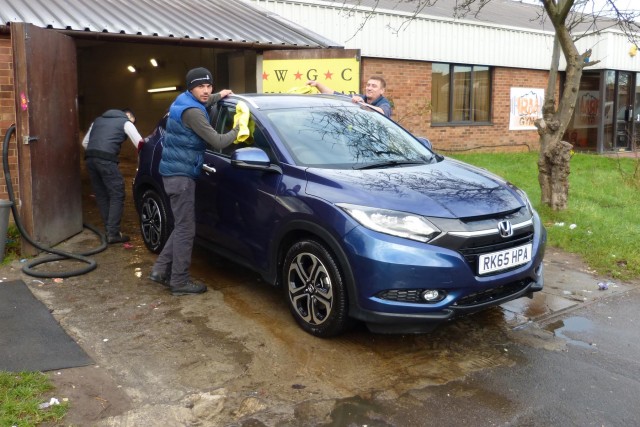
I’m back in the HR-V after a three-week break while I was away in Australia. Like every Honda I have driven, indeed owned, it’s dead easy getting back into the groove. Hondas are so easy to drive, still with probably the slickest manual gearchange you’ll find anywhere.
I had a bit of spare time yesterday, so I got out my Samsung phone’s USB charging lead, plugged it into the Honda’s port and waited to connect it into the system. Nothing. Seems like they are incompatible, though I can’t imagine why. Android phones have been around for years now and this is supposed to plug me into a whole new world of Honda apps.
Like so much in the car business when it comes to driver-car interface electronics, there’s a void between what the manufacturer promises and what actually occurs. I am guessing here, but I bet that Honda was as pleased as punch with its button-free navigation/music/phone system in the HR-V. Yet it is so maddeningly complicated to work, requiring you to take your eyes off the road several times in order to hit the right area of the touch screen to do, well, almost anything.
It may seem churlish to touch on Honda’s dismal 2015 F1 experience with McLaren, but I sense there is a parallel here. Honda develops things in a vacuum, rather than calling in outside expertise. A few focus groups and the company would have been painfully aware of the problems with its in-car entertainment system.
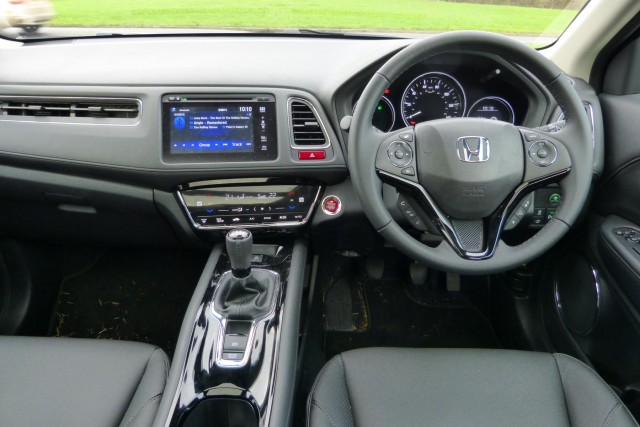
Economical diesel engine
Enough of that. It was only a bit more than a decade ago that Honda didn’t have a diesel engine to its name, before hitting the ground running with the brilliant 2.2-litre unit in the Accord. This much newer 1.6 turbodiesel is similarly impressive. The performance is entirely in keeping with the car, punchy and relaxed at all times.
But it is the economy that has been astounding me. This morning on my sub-30mph, 12-mile urban drive to the office it averaged 62mpg. And yes, I have checked the trip computer and it’s very accurate. Economy never drops below 53mpg. Compare that with our Kia Sportage, which will struggle to reach 30mpg on the same run (though it does have an automatic transmission and four-wheel drive).
And the HR-V, although it is notionally half-a-class smaller than cars like the Sportage, does exceptionally well for passenger and cargo space. Honda’s ‘Magic’ rear seat is still the cleverest of inventions. The rear cushion lifts up against the backrest so tall things can be stored upright, or the backrest and cushion fold forward in one action to give a big, deep boot floor.
Just before Christmas and still inclemently warm weather. I wait with baited breath to see if, eventually, the HR-V will be caught out when it finally does snow. There’s no four-wheel-drive option in the UK, you see.
Honda HR-V long-term review: part two
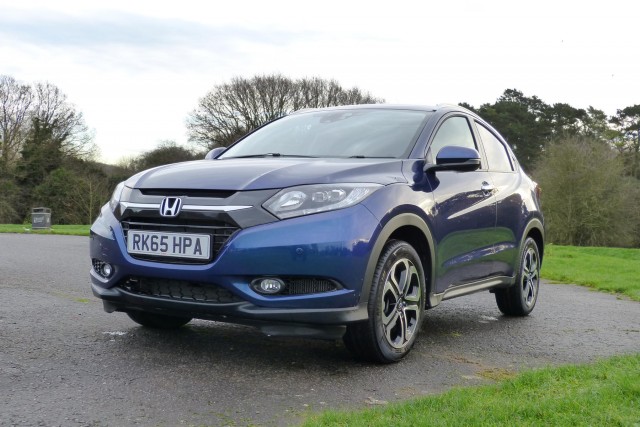
It’s the end of January and there’s still no snow in the south-east of England. That will probably please a lot of crossover owners, because, despite the styling, their cars will be no better than a regular family hatchback when it comes to dealing with the white stuff.
The HR-V is not even offered with four-wheel drive in the UK, which is a reflection of where Honda sees the real demand. It’s far more about style and space than off-road prowess, although a decent set of winter tyres will surely still see this compact crossover navigate itself out of most slippery situations.
I left the HR-V at Stansted airport for a few days last week, using my usual meet-and-greet service. It seems to be the same as valet parking, except you have to walk a few yards more to get into the terminal – and it’s more wallet-friendly.
The Honda, of course, disappears off to a distant car park, to be retrieved a few hours before my flight lands. This time I kept a note of the mileage and I reckon it hadn’t travelled further than one side of the drop-off-zone to the other. Yet it’s always worth doing a walk around to check for damage, as once you’ve left the airport, you are on your own.
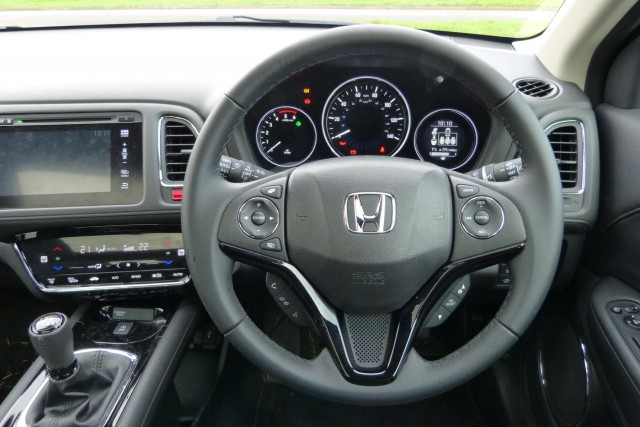
I have this theory that, in winter, diesel fuel is less calorific than in the summer months. The fuel companies add an anti-waxing agent to prevent diesel from thickening up in low temperatures, and in my experience this goes hand-in-hand with worsening economy. That’s certainly the case with our personal 2.0-litre Kia Sportage, but with the Honda the difference seems to be marginal.
I guess that fact that the economy is now more commonly mid-fifties than high-fifties isn’t really much of a reason to worry. It means the HR-V diesel still an amazingly economical vehicle, and with fuel currently at 97.9p for a gallon, it’s makes for very cheap motoring.
Honda HR-V long-term review: part one
Two interesting missives relating to the Honda arrived in February. The first was that Automotive Management magazine had voted the HR-V its 2016 New Car of the Year. The accolade commended the “coupe-like looks, impressive practicality, efficient engines and keen pricing”.
I am not surprised. The ever-popular crossover sector of the new car market seems to have no limit to its growth, and Honda’s canny entry – sitting below its cavernous CR-V – hits the nail on the head for those looking for something a bit more compact.
The big deal, as I have already found out, is the impressive interior volume, which means there’s little loss of space compared with many outwardly larger rivals.
I also spoke to another journalist who is running an identical HR-V for a number of months. She commented on her disappointment with the fuel economy. That surprised me because that same day, driving 60 miles to Farnborough airport, the trip computer told me I had achieved 70mpg through the steady but slow roadworks that blighted the journey.
But I hadn’t carried out a proper tank-to-tank measurement for some time so I checked that a day later. Sure enough, it was still firmly in the 55-60mpg range over a full tank, although that was a few mpg less than the computer claimed. But I’ll forgive it, as the difference was less than 5%.
Highly rated by owners
The second notification was from Honda, directing me to the review site ‘Reevoo’. Here, more than 350 owners of HR-Vs had posted their opinions of ownership and it made for fascinating reading. What they love are the ‘Magic’ rear seats that flip up or down to vary cargo space as you choose, along with the space, high driving position and easy driving nature.
Apart from the seats, these characteristics are what you’d expect in most crossovers and SUVs, but it does seem that Honda has gone a bit further than most in raising the bar.
Perhaps too far in some areas. Many of these owners reflect my view that the satellite-navigation-cum-media-centre is wilfully overcomplicated. Also, they note that there’s not enough oddment stowage space within reach of the driver, the tailgate doesn’t open high enough, and a fair few bemoan the fact that there is no spare wheel (which, of course, helps boost boot space).
I can understand these viewpoints, but despite the moans the HR-V gets some very strong overall ratings on Reevoo, something I find hard to argue with. Still, I do wish that I could get my Samsung phone fully linked in so I could make use of the ‘Aha app integration’. I am very curious to know just what this does.
Time for a trip to a Honda dealer, I reckon. Because, like HR-V owners, I find the handbook is simply too large and impenetrable.
Specification: 2015 Honda HR-V 1.6 i-DTEC EX manual
Price (October 2015): £24,495
Price with options: £25,470 (metallic paint £525)
Engine: 1.6-litre four-cylinder turbodiesel
Power: 120hp
Torque: 221lb ft
0-62mph: 10.5 secs
Top speed: 119mph
Fuel economy: 68.9mpg
ALSO READ
Jaguar XF 2.0d AWD (2016) road test review